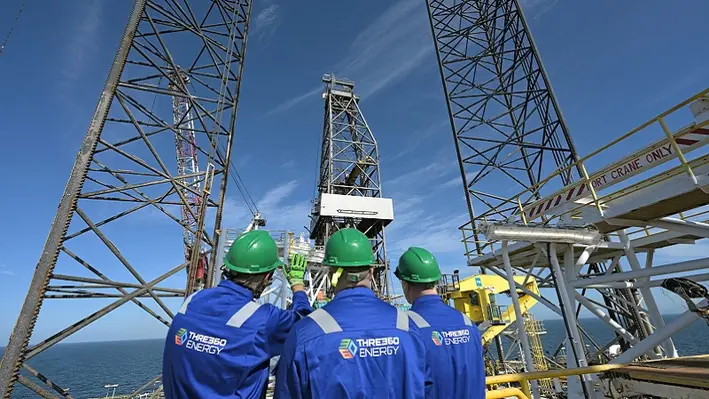

THREE60 Energy, a leading independent energy service company, has received a multi-million-pound contract to deliver and support end-to-end decommissioning for multiple assets in the North Sea.
The contract was awarded by a major North Sea operator and covers both installation and pipeline operator scopes and initially includes three offshore assets with the option to include a further three over the six year period.
With its fully integrated services, THREE60 will deliver and support from the initial planning and regulatory compliance to project management, post cessation of production (CoP) operations, engineering preparation and infrastructure removal.
“We are proud to take on this significant multi-platform decommissioning scope, which reflects the growing demand for our fully integrated services,” remarked Walter Thain, CEO of THREE60. “We have co-created a specific service offering in conjunction with our customer which combines our unique capabilities to responsibly manage these projects, ensuring that we meet the highest environmental standards while delivering safe, efficient and cost-effective decommissioning.
Decommissioning is a key enabler of the energy transition within the UK and a huge export opportunity as other basins globally reach late life.”
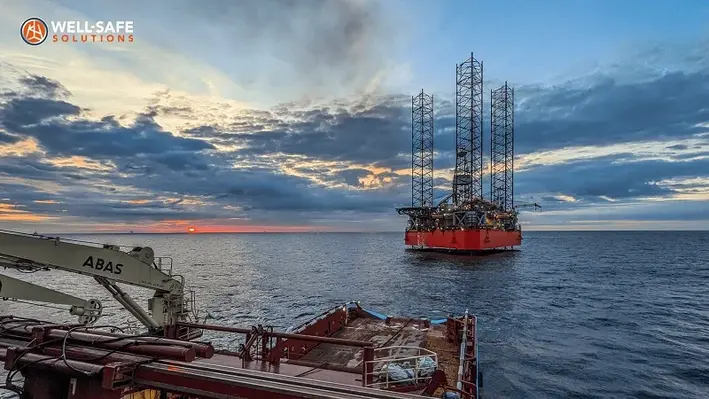

Well-Safe Solutions, an international energy transition specialist, has secured two new decommissioning contracts in the UK Continental Shelf for Spirit Energy and an additional global operator.
The workscope comprises approximately 170 days with the Well-Safe Protector jack-up and Well-Safe Defender semi-submersible vessels being used. The two contracts are worth about US$25mn but both include options for a further combined duration of up to 140 days in 2025 and 2026 which could see the total rise by an additional US$50mn.
“Securing these contracts with an array of blue-chip operators – each with their own distinct requirements – demonstrates the flexibility of the Well-Safe Solutions offering in safely and efficiently liquidating ageing well stock,” remarked Chris Hay, Chief Commercial Officer at Well-Safe Solutions.
“Welcoming back Spirit Energy for another mutually-beneficial project is testament to the close cooperation and high performance we achieved together in our last campaign. As the North Sea continues to face political and economic headwinds, it is heartening to see operators securing valuable North Sea assets amidst a backdrop of availability concerns and units departing the region."
Hay continued, “Approximately 60% of the UKCS’ topside and subsea decommissioning is set to occur between 2026 and 2032, making this a key growth industry for the UK and Scotland alike. We are proud to be collaborating with our clients as the industry moves towards a low-carbon future for the North Sea.”
Spirit Energy have selected the Well-Safe Protector having successfully utilised the vessel to decommission 15 subsea wells in the Trees, Chestnut and Appleton fields last year. The new contract will result in the decommissioning of five wells on the York platform, located in Block 47/03a of the southern North Sea, over 97 days. It is planned to commence in Q2 2025, with two optional subsea wells (projected to take approximately 50 days) to be decommissioned in direct continuation or deferred until a later date.
“With York having reached the end of its economic life in the summer this year, Spirit Energy has partnered effectively with Well-Safe Solutions to ensure swift and responsible decommissioning of the asset,” commented Spirit Energy’s Head of Wells, Nicky Riley. “This builds on the success of our previous collaborations on the Chestnut, Trees and Appleton fields. Together, we look forward to continue setting the standard for efficient, responsible decommissioning of assets at the end of their productive lives.”
Elsewhere, the Well-Safe Defender will carry out its decommissioning campaign for an unnamed client. Beginning in March 2025, at least two subsea wells will be worked on across 75 days. This contract also contains two optional subsea well which may be added in direct continuation with the firm scope, plus another three to be executed in 2026.
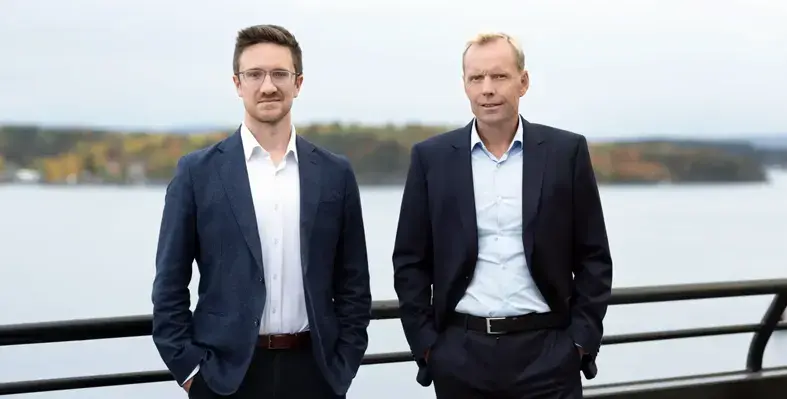
 Well engineering, subsurface and project management specialist, Elemental Energies, has announced a joint venture (JV) agreement with drilling and well services company, Archer, delivering integrated plugging and abandonment (P&A) services to global decommissioning projects.
Well engineering, subsurface and project management specialist, Elemental Energies, has announced a joint venture (JV) agreement with drilling and well services company, Archer, delivering integrated plugging and abandonment (P&A) services to global decommissioning projects.
The long-term partnership will give way to a focused P&A well engineering team that will focus on learning and best practices for P&A design and operations across all well types.
Archer's advanced well services technology and delivery capabilities, along with Elemental Energies' technical subsurface, well engineering and project management expertise, will empower the JV to offer end-to-end well abandonment solutions for platform as well as subsea decommissioning projects. This will deliver integrated planning and execution for large-scale campaigns, supporting operators to maximise efficiency, maintain oversight, and reduce cost. The JV will have the ability to support operators from the earliest project stages, leveraging the strengths of both companies to deliver the most suitable methods and technologies for each project.
Dag Skindlo, CEO of Archer, said, “We’re delighted to deepen our collaboration with Elemental Energies. We acknowledge that some customers are looking to approach P&A differently, and the critical importance of offering a flexible approach to P&A services. This joint venture will help deliver highly efficient well planning and design, with the ability to integrate best in class barrier philosophy and design with deep knowledge of most effective methods to plug and abandon various well types. Ultimately this will help drive down cost of permanent P&A for our clients around the world.”
Mike Adams, CEO of Elemental Energies, added, "There is a close strategic and cultural alignment between our companies, built around a successful track record of working together on joint projects. For P&A to work, it needs long term and highly efficient solutions. This JV will bring that longevity to clients, through a mutual commitment between two long term partners, and a joint venture team that is entirely dedicated to driving efficiency in P&A. This JV partnership is a natural evolution of our relationship with Archer, and we are already actively supporting operators on P&A projects in the North Sea."
As global offshore decommissioning spend is set to rise, the JV aims to offer cost reduction with innovation - essential for advancing decarbonisation. While recognising that P&A needs and preferences vary by region and client, Archer and Elemental Energies are dedicated to supporting these unique requirements, whether through integrated solutions or traditional contracting approaches. This JV represents a commitment to fostering a more efficient and integrated approach to decommissioning across the industry.
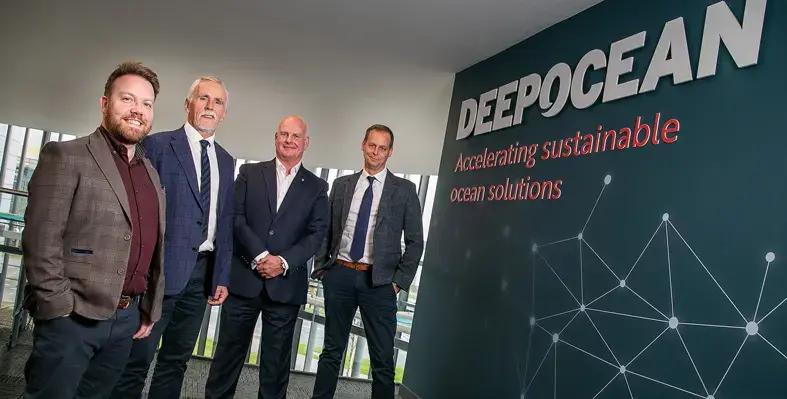
 Ocean services provider DeepOcean has collaborated with well management and reservoir specialist EXCEED to supply vessel-based well plug and abandonment (P&A) services to the global decommissioning market.
Ocean services provider DeepOcean has collaborated with well management and reservoir specialist EXCEED to supply vessel-based well plug and abandonment (P&A) services to the global decommissioning market.
The partnership will offer operators turnkey P&A service for decommissioning projects under a single contract, with services including equipment, planning, execution and close-out, leaving a full audit trail to ensure optimum repurpose and re-use of retrieved assets.
“Compared to rig-based P&A, we believe this partnership can deliver significant time and cost benefits to operators’ decommissioning projects. Our complementary service offering has already proven that it can provide a comprehensive, best in class solution to well decommissioning. We are excited about further developing our relationship with EXCEED,” said Olaf A Hansen, Managing Director, DeepOcean Europe.
The partnership has recently-completed a multi-well, vessel-based P&A campaign on behalf of Serica Energy, saving significant time and costs as well as reduced CO2 emissions compared with rig-based P&A activity.
“By pairing DeepOcean’s subsea engineering competence and diverse global fleet of vessel with EXCEED’S specialist range of well decommissioning expertise, we can offer the international decommissioning sector a world-class vessel-based well P&A service. Forged in the North Sea, we look forward to continuing this relationship by commencing another multi-client, multi-well campaign later this year,” commented John Anderson, Commercial Director at EXCEED.
EXCEED’s dedicated vessel-based decommissioning team provides a fully compliant subsea wellhead removal service. Removing post-decommissioning liability, clients also benefit from cost efficiencies via a campaign approach.
“Our joint competence, technology and assets allow this partnership to deliver safe and efficient offshore operations to clients both here in the North Sea and further afield. We look forward to cooperating with our clients to develop multi-well campaigns that will deliver significant cost and time savings,” remarked Robin Mawhinney, Managing Director of DeepOcean’s UK operation.
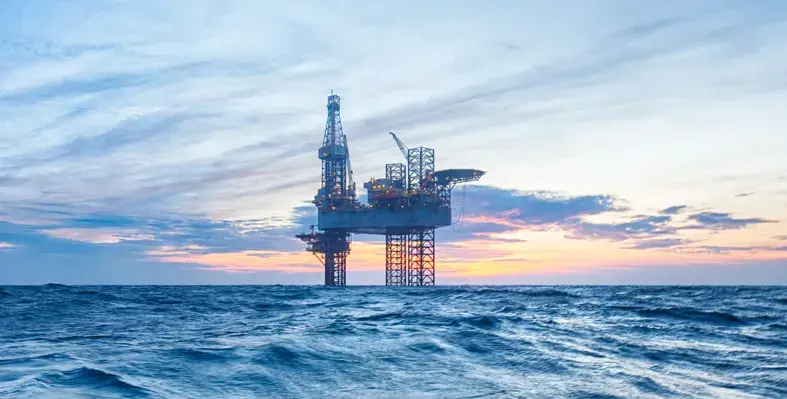

Interoil Exploration and Production ASA, a Norwegian-based exploration and production company with a focus on Latin America, has announced that its Colombian subsidiary has carried out a downhole intervention to the Vikingo well.
Interoil Colombia Exploration and Production (ICEP) successfully completed the project which included the installation of a jet pump with a modified operational configuration. In doing so, it raised production levels from 105 barrels of oil per day (bopd) up to an impressive 400 (bopd). Production is expected to stabilise at around 200 bopd and the intervention has also improved operational efficiency by reducing lifting costs with the new jet pump configuration.
“This intervention reaffirms Interoil’s confidence in the potential of our assets,” remarked Leandro Carbone, CEO of Interoil. “We are committed to maximising the value of our fields while creating lasting benefits for the local communities, our employees, and shareholders.”
The success of the project has been described by the company as a commitment to optimising production efficiency, extending the economic life of its assets, achieving social and environmental objectives, and exploring opportunities to expand its asset portfolio.
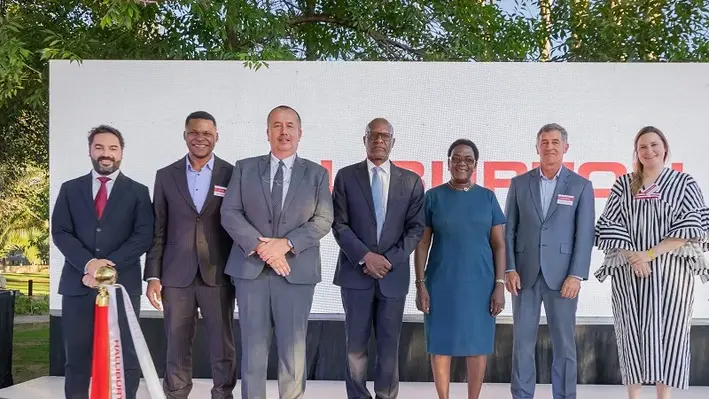

Halliburton, a leading provider of products and services to the energy industry, has announced that it will open new facilities in Namibia to support the country’s in-country operations.
The facilities are located across the country, representing a combined footprint of approximately 20,000 sq m. The Windhoek office will handle support services; a Walvis Bay site will focus on cementing and drilling fluids services and warehousing; Swakopmund will house sperry drilling, well completions, testing & subsea, and wirelines & perforating services; while Lüderitz will support cementing and wirelines operations.
Up to 200 Namibians are expected to be employed at the facilities, helping to foster local expertise in relevant technologies and contribute to the country’s economy.
“These new facilities allow us to operate close to our customers, collaborate in real time, and deliver the advanced technologies and services that maximise asset value,” remarked Antoine Berel, Vice President, Halliburton Sub-Saharan Africa (South). “We are proud to support Namibia’s oil and gas industry, contribute to the economic success of the country, and create opportunities for local people.”
Halliburton has indicated that the announcement is a demonstration of the importance of the country’s growing oil and gas sector, with the new facilities dedicated to supporting this growth while strengthening the company’s regional presence.
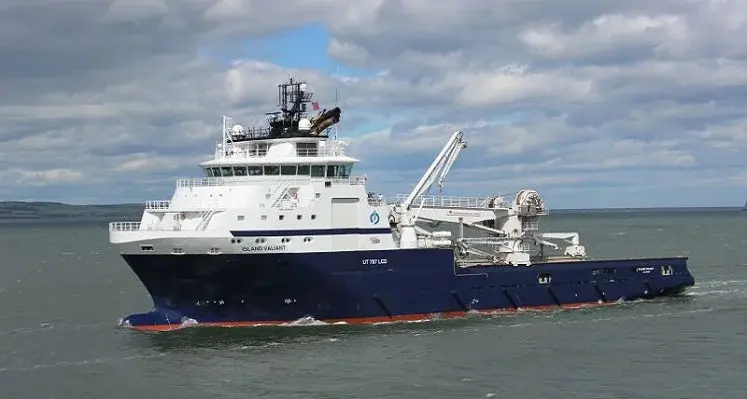

Mermaid Subsea Services, a leading international subsea services company, has concluded a 21 well plug and abandonment campaign on behalf of a North Sea operator.
The multi-well campaign was executed using the Island Valiant vessel and was carried out on wells across the Northern and Central North Sea. As the largest contract Mermaid has completed to date, the project spanned two years and created six new jobs in the process.
“This has been a landmark project, not just for Mermaid but also for the wider North Sea decommissioning sector,” remarked Scott Cormack, Regional Director for Mermaid Subsea Services (UK).
“For a company that only entered the UK in 2020 to have carried out, what we understand to be, the largest vessel-based decommissioning campaign in the region ever is a huge achievement, testament to the Mermaid team and further proof that there is space in the market for a new player delivering innovative solutions.
“I would like to thank the whole Mermaid team for playing their part in the successful delivery of this project and to the client for putting their faith in our safe, efficient and cost-effective vessel-based well P&A offering.”
Mermaid is building its reputation in the decommissioning market at an incredibly opportune time given the wave of activity that will be required in the North Sea in the near future. According to the latest OEUK report, operators need to plug 200 abandoned North Sea wells a year in order to stay on top of targets.
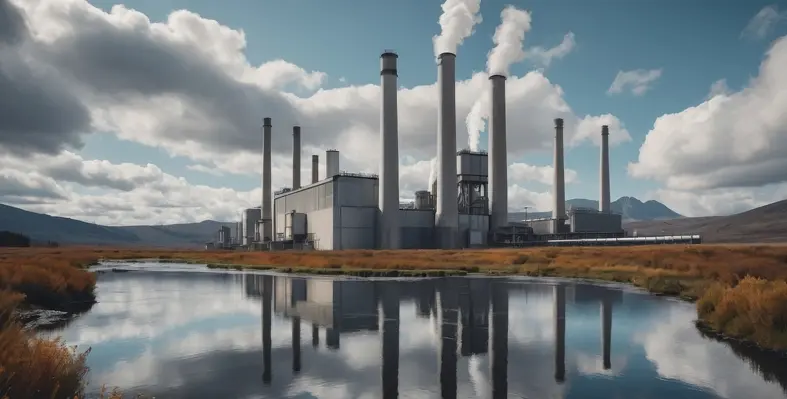
 Clean energy technology provider Exergy International has signed an agreement with Maren Maras Elektrik Uretim AS for the supply of two new geothermal power plants in Turkey.
Clean energy technology provider Exergy International has signed an agreement with Maren Maras Elektrik Uretim AS for the supply of two new geothermal power plants in Turkey.
Located in the Aydın region, the 33 MWe Emir GPP and the 13 MWe Nezihe Beren 2 GPP are expected to be commissioned by November 2025.
These two binary geothermal power plants will utilise Exergy's advanced ORC technology based on the Radial Outflow Turbine. The Emir GPP will feature a configuration with three turbines and two generators, while the Nezihe Beren 2 GPP will have one turbine and one generator. Both power plants will use air cooled condensers. The turbines, generators and other related equipment will be manufactured locally at Exergy’s subsidiary in İzmir. Exergy’s technology will harness Maren’s geothermal resources at maximum efficiency and deliver clean baseload power to the local grid.
Once in operation, the two power plants will enable saving approximately 134,000 tons of CO2 emission per year, avoiding an equivalent fossil fuel power generation.
Luca Pozzoni, General Manager of Exergy International, said, “This agreement marks another significant achievement for Exergy in Turkey, a region where we have 23 geothermal power plants operational in our portfolio, with several more nearing completion. We are thrilled to expand our collaboration with Maren and further contribute to Turkey's sustainable energy goals.”
Erdogan Arpaci, General Manager of Exergy Turkey, who played a major role in securing a contract, said, “I am highly satisfied with the signing of this new contract with one of our long-standing clients, which demonstrates the trust and reliability Exergy has established in Turkey. We have worked closely with Maren to achieve this outcome, and at Exergy we are very eager to begin the execution phase for these significant projects, which will bring an additional 46 MWe of capacity to the Turkish geothermal market.”
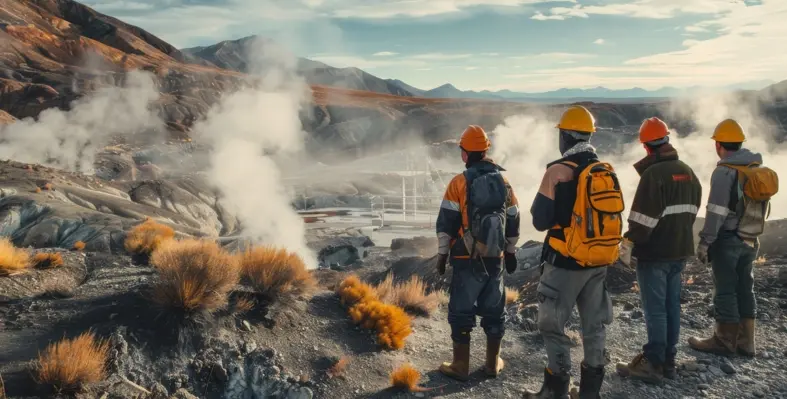
 E2E Energy Solutions has signed of a Letter of Intent with Novus Earth to jointly develop the Latitude 53 Hinton Inc project over two phases
E2E Energy Solutions has signed of a Letter of Intent with Novus Earth to jointly develop the Latitude 53 Hinton Inc project over two phases
Situated just outside of Hinton, Alberta, the groundbreaking initiative represents a major step forward in geothermal energy development. With construction set to begin in early 2025, the project will drive both sustainable energy solutions and agricultural growth.
The first phase of the project will focus on utilising geothermal energy to support year-round strawberry cultivation across a 20-acre greenhouse. This facility will receive up to 50 gigajoules of sustainable, consistent heat per hour, provided by E2E's geothermal technology. The second phase will incorporate E2E’s patented Enhanced Geothermal Reservoir Recovery System (EGRRS) to generate 10 MW of zero-emission power, proving the feasibility of geothermal technology as a reliable energy source.
"We are looking forward to introducing this innovative approach to thermal and electrical generation to Alberta," said Jeff Mesner, President of Novus Earth. "Our partnership with E2E Energy Solutions perfectly aligns with our mission to leverage advanced geothermal technology for sustainable, community-centered projects."
“We’re very pleased to see our EGRRS technology integrated into a project that will bring stable, affordable energy to Alberta,” said Nick Daprocida, CEO of E2E Energy Solutions. “This project demonstrates how geothermal energy can contribute to creating sustainable jobs and delivering reliable baseload power to the agricultural sector.”
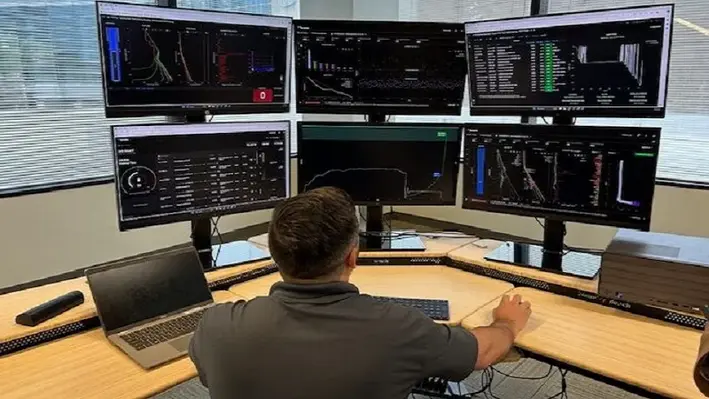

Tenaris, a global manufacturer and supplier of steel pipes and relates services for the energy industry, has used its presence at ADIPEC 2024 to introduce WISer, a suite of digital solutions designed to enhance well integrity, safety, efficiency and reliability.
As one of the world’s leading energy events, there could hardly be a better stage to reveal new solutions that can help the sector deal with its most pressing challenges. As such, WISer becomes the latest addition to the Rig Direct service package and builds on the company’s renowned on-site field assistance.
The pipe-by-pipe traceability enabled by PipeTracer technology and the 24/7 support provided from its remote monitoring centre, WISer includes two digital solutions that maximise the lifecycle of pipe strings.
This includes the iRun Casing cloud-based tool that provides real-time monitoring of casing installation to minimise the risk of lost lateral length and production. It also helps to prevent costly accessibility issues caused by fatigues damage, buckling, over-torque or stuck pipes.
There is also the Torque turn monitoring system. Tenaris field service experts collect and analyse real-time torque data at the well using advanced equipment to improve connection make-up reliability, reduce errors, and enhance the overall integrity of the assembly.
“With WISer, we support our customers' drilling projects during pipe running operations, improving decision-making and enhancing the consistency and reliability of well construction by combining our extensive field service experience with real-time data analytics and remote monitoring,” commented Lucas Pigliacampo, Tenaris Vice President Oil & Gas Technologies. “A key addition to our Rig Direct mill-to-well service model, WISer reflects our ability to continually adapt and innovate.”
Aside from providing a platform for the industry to discover the latest solutions entering the market, ADIPEC was also a forum for debate and progressing ideas that will change the face of the sector for years to come.
Unsurprisingly, decarbonisation was a key topic of discussion of the conference in Abu Dhabi as oil and gas leaders strive to strike the balance between meeting barrel demands and lower emissions output.
Tenaris strode into the discourse, with Gabriel Podskubka, the company’s Chief Operating Officer, participating in the ‘Optimising Operations to Advance Decarbonisation: A Digital and Cultural Shift’ panel session. Here, the panellists agreed that while advanced technologies, data-driven insights and process improvements can contribute to reducing emissions across the value chain, to achieve meaningful decarbonisation, deeper cultural shifts and cross-industry collaboration is required.
“At Tenaris, we are true believers that sustainability and decarbonization support our business strategy” Podskubka contributed. “These are key priorities for our leadership, our employees, our communities, and our customers. Today, our carbon emissions intensity is the lowest in our sector, and we are investing to ensure it remains so in the future. At Tenaris, we see decarbonisation not only as the right thing to do, but as a sound business decision. It’s an opportunity for us to continue leading in another dimension of our business.
“You need a vision, measurable targets and a strong leadership that is willing to convert this vision into reality. After communicating our decarbonisation commitment, we focused on defining KPIs for measuring emissions of our processes at every site. We now communicate both internally and externally on our progress and initiatives to reduce our CO2 emissions intensity per ton of steel by 30% by 2030.”
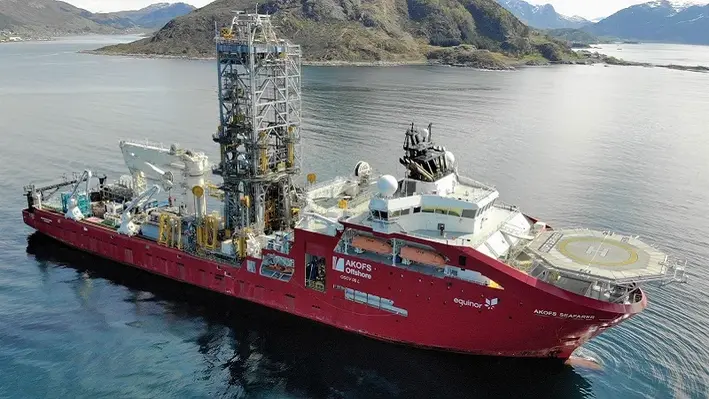

Akastor ASA has signed an agreement to acquire all of the interests Mitsui & Co. Ltd holds in AKOFS Offshore, a provider of vessel-based subsea well installation and intervention services to the oil and gas industry.
“We sincerely thank Mitsui for their valuable and good collaboration since 2018,” remarked Karl Erik Kjelstad, CEO of Akastor. “We believe the timing for increasing our investment in AKOFS Offshore is right, as market dynamics within the subsea well intervention and installation sector are increasingly compelling.”
A purchase price of US$22.5mn will see Akastor now hold 75% of the shares in AKOFS Offshore with Mitsui O.S.K. Lines holding the remaining 25%. As part of this development, the two shareholders will negotiate and enter into a new shareholders agreement on similar terms but reflecting the changed ownership.
“We are excited to deepen our commitment as well as to continue the journey together with MOL as partner,” continued Kjelstad. “Together, we remain confident that AKOFS Offshore is well-positioned for continued growth in the years to come and are well-aligned regarding our ownership strategy.”
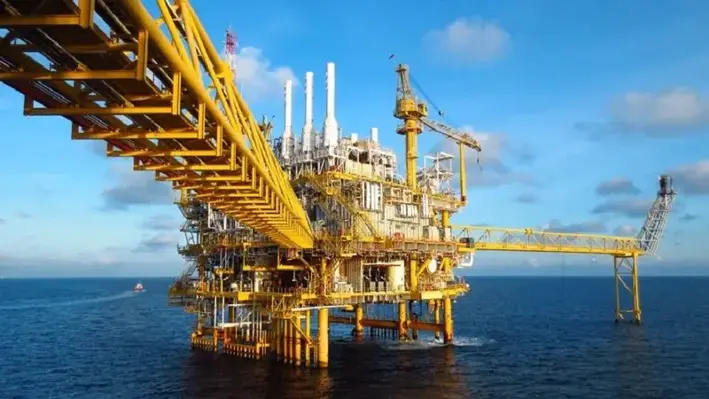

International, a protective coating brand of AkzoNobel, has introduced the next evolution in epoxy passive fire protection (PFP)
Chartek ONE has been introduced as a single-coat, mesh-free solution that simplifies PFP application for assets in the energy sector by maximising efficiency, streamlining installation processes and enhancing health and safety.
As a 100% solids, boron-free two-pack material, Chartek ONE provides enhanced durability and combined corrosion, cryogenic and hydrocarbon protection. It provides three hours of jet and pool fire protection across a wide operating temperature range, effectively shielding assets from all fire types.
Chartek ONE can accelerate installation of PFP systems both in the workshop and onsite, lowering installed weight, reducing labour and material costs whilst achieving the same fire protection, which is particularly important for industries with strict weight requirements, such as offshore oil and gas. In doing so, Chartek ONE can reduce workshop hours by up to 59%, saving users both time and money throughout projects and over the lifetime of the asset.
Introduced for customers in the Middle East, Chartek ONE availability in other regions is planned for 2025.
“Chartek stands at the forefront of the industry, offering a comprehensive range of solutions that reflect our heritage and track record of success,” remarked Robin Wade, Global Fire Protection Manager at AkzoNobel. “Our investment in research, development and PFP capabilities enable us to provide our customers with the best possible outcomes.
“Chartek ONE was developed in our Felling facility which is one of the world’s largest UKAS-accredited PFP testing centers for intumescent PFP. Patented polysiloxane modified thio-ether and epoxy technology resolves many of the pain points found in the provision and longevity of epoxy PFP in one simple solution. International is a dedicated partner and through the celebrated history of Chartek, we are committed to excellence in technical support, product specific engineering solutions, and delivering class-leading products.”
Chartek benefits from a presence in the industry spanning more than half a century. As passive fire protection, it excels in the most demanding conditions and the range is one of the world's most complete portfolio of epoxy intumescent PFP coatings available, according to the company.
Formulated and tested against critical industry standards for energy assets including NORSOK M-501:2022 Edition 7 and ISO 22899 (standard and high heat flux jet fires), Chartek ONE is free from boron and has a 100% solids formula to reduce occupational risks and improve HSE performance and footprint.
“We are thrilled to be introducing Chartek ONE for our Middle East customers at ADIPEC 2024,” added Andy Holt, Business Development Manager - Middle East at International. “Crafted to offer our customers superior safety, reliability, and peace of mind, Chartek ONE showcases our continued dedication to sustainability and innovation.
“This single-coat, mesh-free solution will drastically simplify PFP projects for our customers, minimizing downtime and reducing overall project costs. Our commitment to considering the environmental impact of our work is an integral part of the development process. Chartek ONE’s 100% solids, boron-free formula, stands as a testament to this commitment.”
Page 37 of 107